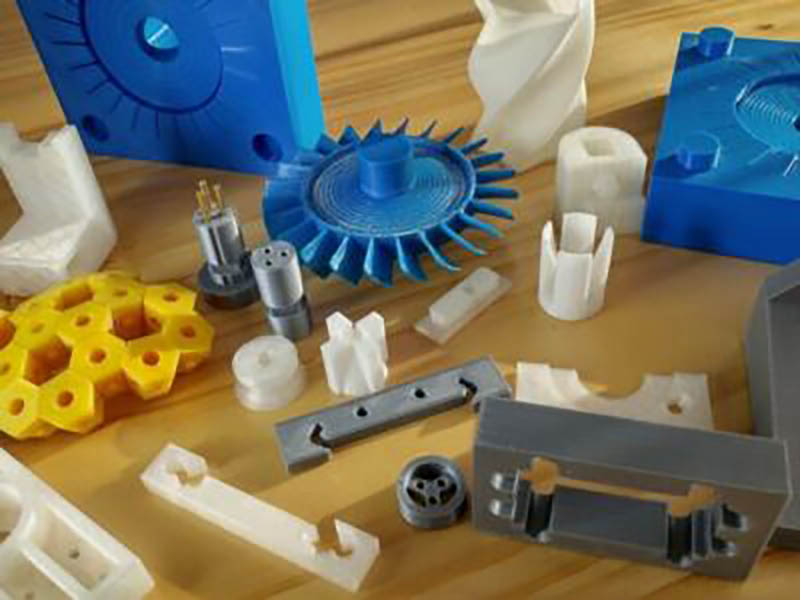

Previously published on fastradius.com on November 8, 2021
During the Fused Deposition Modeling (FDM) 3D-printing process, the 3D printer reads the digital file, divides the object into slices, and extrudes molten plastic material through a nozzle layer by layer to form the final part. The process seems straightforward, but there are many factors that can affect the quality of your final print, from your chosen material to the features on your design. The height of each individual layer in your part can also have a huge impact on the final product. Let’s explore this in greater detail.
Layer height is a measurement of how much material the printer’s nozzle extrudes for each layer of your part. It’s measured in microns or millimeters, can be adjusted through a slicer program, and varies from project to project.
Just as the number of pixels determines a television’s resolution, a print’s layer height determines its resolution. Lower layer heights require more layers to achieve the same height, which increases the part’s quality and smoothness. Unfortunately, it also increases its print time, which correlates with an increase in cost. Taller 3D-printing layers take less time to print, which makes your part less expensive to print, but the trade-off is that parts will have a lower resolution.
If your design is artistic, highly detailed, or must be incredibly precise, choose a lower layer height. Likewise, opt for a lower layer height if your part has holes, angles, or curved surfaces — otherwise, it may develop noticeable steps due to the layered nature of 3D printing. 3D printing with smaller layer heights can also help if your design has overhangs, as layers will overlap more. However, be wary of using thin layers below 0.1mm, as these increase printing time and the possibility of imperfections while offering diminishing returns concerning your part’s visible quality.
On the other hand, if you need to print a part quickly, keep costs low, or are prioritizing function over aesthetics, you’ll want to use a larger nozzle and a taller layer height. A taller layer height means your printer has fewer layers to print to achieve the same volume, which speeds up the printing process and gives you a fully functional product at a lower cost. However, your part will also have fewer details and lower quality. The good news is that you can always sand, paint, or dip your product in an acetone bath to improve its appearance.
In addition to considering your desired balance of function and aesthetics, you will need to take into account the type of FDM 3D printer your part is being produced on when deciding which layer height to use. If your layer height is too low for the printer nozzle’s diameter, it will struggle to push out the filament, but if it’s too high the layers won’t stick together. A good rule of thumb is to keep your layer height between 25% and 75% of the printer nozzle’s diameter.
When deciding your layer height, you’ll want to think about the specific 3D printing process you’re using because some printers have smaller minimum layer heights. When printing a part via FDM, layer heights typically range from 0.05mm to 0.4mm, with 0.2mm being the most common.
How do you decide whether to print on the higher or lower end of an acceptable range? The answer depends on your part’s design and purpose. You’ll want to ask yourself:
Once you’ve answered these questions, you can find a layer height that offers the balance of resolution and speed that your part requires.
Your layer height can affect print time, quality, cost, strength, and more, so choosing an appropriate layer height is essential. If you’re unsure which layer height is best for your project, consider working with a trusted manufacturing partner.
When you work with SyBridge, you’ll gain access to an experienced team that can help you select the right layer height for your project to ensure a fast and high-quality print. Contact us today to get started on your next project.
Forget typical cycle times. We're pushing the boundaries of conformal cooling. While traditional approaches deliver…
Forget typical cycle times. We're pushing the boundaries of conformal cooling. While traditional approaches deliver…
From left to right: Brayden Janak (apprentice); Logan Vifaquain (CNC machining, Programming and CMM); Ron…
SyBridge Technologies is proud to announce we have been awarded the 2023 General Motors Supplier…
Today, designers and engineers are accustomed to working with digital tools in their day-to-day jobs.…
Optimizing Your Injection Molding Process for Cost-Effective Manufacturing Excellence In today’s competitive landscape, manufacturers are…